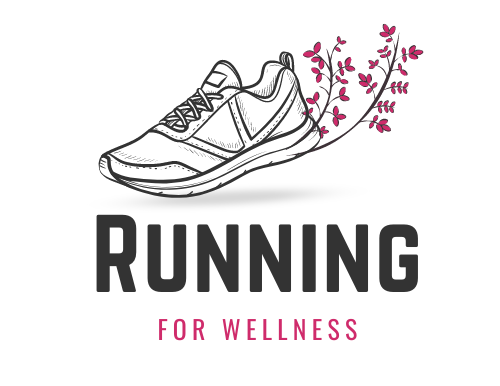After finishing a workout, your body is in a heightened state. Muscles are warm, heart rate is elevated, and energy stores are temporarily depleted.
The minutes and hours after a sweat session are just as important as the workout itself because that’s when recovery starts.
A well-structured reset routine helps your body repair muscle fibers, replenish energy, and prepare for your next session without unnecessary soreness or fatigue.
It doesn’t matter if you just powered through a high-energy cardio class, lifted heavy weights, or went for a long run; the steps below form a practical, evidence-backed routine that sets you up for faster recovery and long-term fitness success.
Step 1: Cool Down with Stretching

The first step after any intense workout is to cool down and gradually guide your body back to a resting state. Skipping this step leaves muscles tight, heart rate elevated, and soreness lurking for later.
Spend 5-10 minutes performing static stretches, holding each for 15-30 seconds. Focus on the muscles that worked the hardest during your session.
Lower Body Example
- Hamstrings: Touch your toes while keeping knees soft.
- Quadriceps: Stand on one leg, pull the opposite foot toward your glutes.
- Calves: Lean forward against a wall with one leg extended behind you.
Upper Body Example
- Shoulders: Pull one arm across your chest.
- Chest: Clasp hands behind your back and gently lift.
- Triceps: Raise one arm overhead, bend the elbow, and press gently with the opposite hand.
According to the Cleveland Clinic, cooling down with stretching not only reduces immediate tension but also lowers the risk of delayed onset muscle soreness (DOMS) and injury complaints over time.
Step 2: Hydrate and Replenish Electrolytes

Sweating during a workout drains your body’s fluid reserves. Even mild dehydration can trigger muscle cramps, fatigue, headaches, and a dip in performance. Rehydration is your next priority.
- Start with water: Drink 16-20 ounces within 30 minutes post-workout.
- Replenish electrolytes: If your session lasted over an hour or was particularly intense, include sodium, potassium, magnesium, and calcium.
Practical Options
Rehydration prevents cramps, supports circulation, and keeps your energy up for the rest of the day.
Step 3: Refuel with Nutrition
Your post-workout meal or snack sets the tone for muscle repair and energy replenishment. Aim to eat within 30 minutes to maximize the “anabolic window,” when muscles are most responsive to nutrients.
Nutrition Guidelines
Nutrient
Role
Food Examples
Protein
Muscle repair and growth
Eggs, chicken breast, fish, protein shakes
Carbohydrates
Glycogen replenishment
Oats, fruit, whole-grain bread, sweet potato
Electrolytes
Fluid and muscle balance
Banana, nuts, coconut water
If you want more post-workout nutrition insights, you can browse www.theunsubscribe.com for creative recovery tips.
Tip
Research from the American College of Sports Medicine shows that pairing protein and carbs soon after a workout can boost muscle protein synthesis by up to 200%, accelerating repair and reducing muscle breakdown.
Step 4: Use Evidence-Based Recovery Techniques
Beyond hydration and nutrition, targeted recovery methods can speed up healing, reduce soreness, and prepare your body for future workouts. A meta-analysis in Frontiers in Physiology analyzed several popular techniques and their effects on DOMS, fatigue, and inflammation.
Technique
DOMS Reduction
Fatigue Reduction
Notes
Massage
Strong
Strong
Best results; foam rolling works as a DIY option
Compression Garments
Moderate
Moderate
Improves blood flow for runners and lifters
Cold Water Immersion
Moderate
Moderate
<15°C for 10-15 mins reduces soreness
Contrast Water Therapy
Mild
Minimal
Alternating hot/cold boosts circulation
Cryotherapy
Mild
Not available
Short-lived effects, occasional use recommended
Active Recovery
Moderate
Minimal
Light activity like walking or yoga works best
Practical Applications
- Foam rolling: 10-15 minutes focusing on tight spots like quads, hamstrings, or lats.
- Compression gear: Wear sleeves or tights post-workout to aid circulation.
- Cold therapy: If a cold bath is impractical, use ice packs on sore muscles for 10-15 minutes.
- Active recovery: A light walk or gentle cycling the next day keeps blood moving without stressing muscles.
Step 5: Prioritize Sleep
Sleep is the most overlooked recovery tool. During 7-9 hours of quality sleep, your body produces growth hormone, repairs micro-tears in muscle fibers, and restores energy for future workouts.
Better Sleep Strategies
Skipping sleep not only slows recovery but can elevate cortisol, a stress hormone that hampers muscle growth and repair.
Step 6: Plan Your Weekly Routine
Recovery isn’t just about what happens after one workout. Your weekly plan determines how well your body adapts to training.
Sample Weekly Structure
- 3 days strength training: Split muscle groups (legs, upper body, core) to allow recovery
- 2 days cardio: Running, cycling, or swimming for heart health
- 2 days active rest: Walking, stretching, or yoga to keep blood flowing
This rhythm allows your body to adapt, rebuild, and perform better without the risk of overtraining.
Step 7: Utilize Additional Recovery Aids
@planetfitnessGood recovery is the real secret to getting – and staying – strong. Our certified trainer Erik is back with tips on how to use the foam roller, so you can roll those muscles out and recover after your next big lift day. Don’t forget to save and share 💜♬ original sound – Planet Fitness
If you have access to gym amenities or home tools, a few extras can boost your routine:
- Foam rolling: 3-4 sessions per week to ease tightness
- Sauna: 15-20 minutes, 2-3 times weekly to improve circulation
- Assisted stretching: 1-2 sessions per week to improve flexibility and prevent injuries
These methods enhance relaxation, reduce stiffness, and give muscles the best chance to recover quickly.
Examples
Picture finishing a 45-minute HIIT session. You:
By following these steps, soreness stays manageable, energy rebounds, and your next workout feels stronger instead of sluggish.
Summary

A quick reset routine after a sweat session is not just about sitting still and waiting for soreness to fade. It’s an active process that combines stretching, hydration, nutrition, recovery techniques, and sleep to optimize how your body bounces back.
Following these steps regularly leads to fewer aches, better energy, and more consistent progress. Whether you train a few times a week or live in the gym, giving recovery the same attention as your workouts will keep you feeling strong, refreshed, and ready for whatever comes next.
Related Posts:
- Top 400 Hilarious Gym Quotes to Keep You Motivated
- How Long Does It Take to Train for a Half Marathon?
- Half Marathon Training Plan for Beginners - Simple…
- 25 Simple Running Motivation Tips To Get You Moving
- How Far Is a Half Marathon? Everything You Need to Know
- 6 Best Running Playlists Music for Every Pace and Mood







